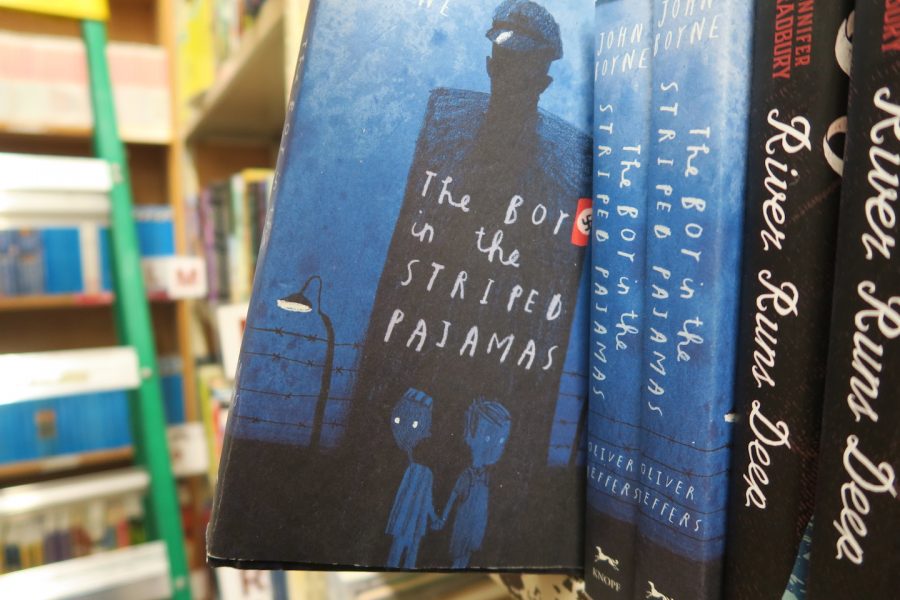Five Ways to Remember the Holocaust
With the National Days of Holocaust Remembrance approaching, some may be unsure on how to show their solidarity. Here are some ways to remember the millions of victims of the Holocaust.
April 4, 2017
Today, anti-Semitism and threats of genocide are on the rise, as evidenced by the recent bomb threats and attacks made on various Jewish communities across the country. To combat such sentiments, the National Days of Holocaust Remembrance are looming on the horizon. From April 23-30, the nation will pay tribute to the six million European Jews that were killed in the genocide and many more that were persecuted.
Most people will try to visit the United States Holocaust Memorial Museum, located in Washington, D.C., as it contains “documentation, study and interpretation of Holocaust history, and serves as this country’s memorial to the millions of people murdered during the Holocaust,” according to its website. However, many people — especially students — do not have the ability to travel to pay tribute while also educating themselves. Below is a list of practical ways NYU students and others can remember the millions that were persecuted in Nazi Germany.
Visit Your Local Museums
New York City has its own memorial called the Museum of Jewish Heritage at 36 Battery Pl. Most cities also have their own memorial sites such as the Los Angeles Museum of the Holocaust, The Florida Holocaust Museum in St. Petersburg and the New England Holocaust Memorial in Boston. Visiting these sites will not only reaffirm the severity of the event to its guests, but also educate them on the history of the Holocaust and how it came to be.
Utilize Facebook, Instagram and Twitter
Make a status notifying your friends about the National Days of Holocaust Remembrance or share famous photographs and caption them with the hashtags #IRememberBy and #DOR2017. This will spread the word and encourage others to also post on their pages. By familiarizing others with the Days of Remembrance, we can hinder hatred and promote peace.
Visit Historical Sites — If You’re Abroad
Traveling abroad can be a fun and educational experience, but if you’re in Europe, it can be a very humbling one too. Try to visit sights such as Auschwitz in Poland or Anne Frank’s House in the Netherlands for a more interactive experience. Imagine how the prisoners must have felt in the concentration camps or how a young Jewish girl must have felt in Nazi Germany where she was being persecuted over something she couldn’t control.
The Shoes on the Danube Bank in Hungary present an especially horrifying case — Jews were shot by fascists in Budapest and left to drift away in the river during World War II. Today, 60 pairs of shoes forever sit on the edge of the river for people to remember them by.
Catch Up on Essential Reading
Reading books about the Holocaust never ceases to be a harrowing experience. Popular novels include “The Diary of a Young Girl” by Anne Frank, “The Book Thief” by Markus Zusak and “The Boy in the Striped Pajamas” by John Boyne. However, research deeper into less-known books about the Holocaust to gain a more in-depth understanding about the different intersectional groups involved.
“Maus” by Art Spiegelman is a graphic novel that illustrates the humans involved in the Holocaust as different animals. “An Underground Life: Memoirs of a Gay Jew in Nazi Berlin” by Gad Beck recounts life as a member of the LGBTQ community. “Women Heroes of World War II: 26 Stories of Espionage, Sabotage, Resistance and Rescue” by Kathryn J. Atwood tells the story of strong women and their roles in the outcome of the war.
Host a Movie Night
Create a Facebook event and invite friends to a movie night to screen famous movies about the Holocaust. Titles such as “Schindler’s List” and “The Pianist” are classic examples while book adaptations such as “The Diary of Anne Frank” and “The Boy in the Striped Pajamas” are also good choices.
An interesting choice would be the film “Life is Beautiful” which is a comedy-drama directed by Roberto Benigni. Guido Orefice and his son become victims of the Holocaust after a seemingly happy beginning, and Orefice does everything in his power to lead his son to believe the concentration camp is one big game.
Email Han Wang at [email protected].













































































































































heh • Mar 23, 2021 at 5:54 am
lol
Kyla Bills • Apr 5, 2017 at 4:52 pm
ummmm seems fucked y’all